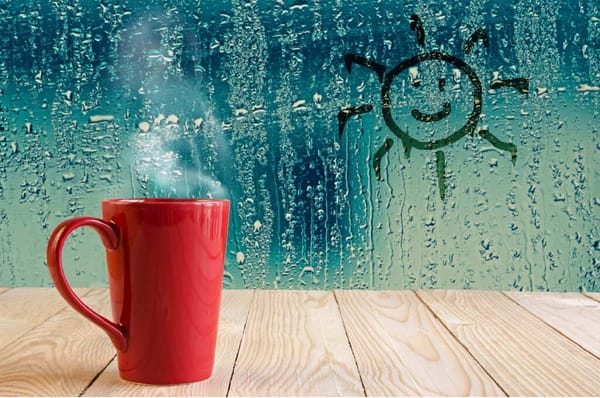Is Buying a Cabin for Vacation Rentals a Good Investment?

Buying vacation rental properties in addition to your primary residence can be a great investment. Not only will you be investing in your own health and well-being, but also in your financial future. When you are not exploring the great outdoors, you can always rent it out on a short-term basis. In fact, according to Vrbo, demand for cabin rentals increased by 25% year over year.
It makes sense why cabin rentals are increasing in popularity. While they might offer only one bedroom, there are many other unique amenities, like a fire pit and hiking trails, that guests can’t necessarily find with other types of vacation properties.
Let’s take a closer look at the ins and outs of buying and managing a cabin.
What Is a Cabin Vacation Rental?
A cabin home is a small home that’s often usually located in a rural location like the countryside or woods. It will also typically offer minimal amenities, putting greater emphasis on getting closer to nature. From wood to stone, cabins can be made from various materials. A mountain cabin poses bigger issues than a more accessible version but being located near the likes of a ski resort is a nice way to circumnavigate this issue.
The choices of cabin property investment vary, but the following are some of the most common types of vacation rental cabins:
- Log Cabins
A classic log-style cabin usually has a rustic charm. Not only is its log exterior inviting, but a log rental cabin can also help to retain more heat making them an energy-efficient choice. Log cabins are a popular choice among investors looking to buy a cabin because of how much value it offers.
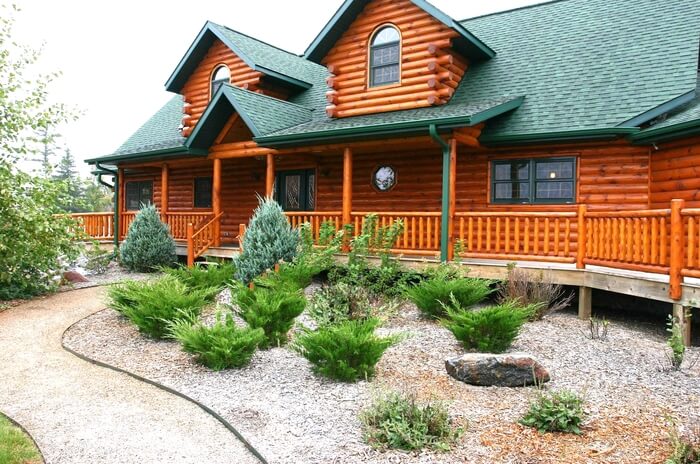
- Lodges
Lodges are smaller than hotels but generally larger than most other types of cabins. They are situated in rural places like the mountains or countryside. Luxury lodges are amongst some of the most popular cabin rental-types, especially when they have a hot tub!
- A-frame Cabins
One of the key characteristics of A-frame cabins is their massive windows. While you might have to think innovatively to make up for the limited storage space, you will have ample natural light and stunning views to boast.
- Tree Houses
Tree houses are mainly made from wood, built in or around sturdy trees for added height, and give guests the opportunity to explore the great outdoors more intimately. If you are interested in starting a glamping business, this type of accommodation can work well.
- Tiny Houses
Tiny houses are currently trending. If your target audience is couples or individual travelers searching for an off-the-grid experience, this type of cabin can be a great choice. As the name suggests, they are very small and offer limited luxury amenities.
- Mobile Cabins
Mobile cabins are similar to tiny homes but can be transported to different locations as they are on wheels. This type of cabin has the added benefit of offering the possibility of different locations for your guests. You could have arrangements with different cabin sites around your area and move the cabin rental between locations depending on your guest’s preference.
Typically, a mobile cabin is assumed to be a more affordable vacation home option for budget-friendly travelers, although luxury options are available too.
Are Cabin Vacation Rentals a Good Investment? Pros and Cons to Consider
While the pros can outweigh the cons, there are a few distinct drawbacks that you will need to consider before handing over your down payment on your new cabin rental. Here are some of the main advantages and disadvantages of buying a cabin and renting it out as a vacation property:
Pros
1. Lower start-up and purchasing costs than a traditional investment property
Compared to a traditional investment property, you might be able to pick up a cabin for much cheaper. For example, some mobile homes are available for less than $100K. However, whenever purchasing any property, it’s best to do your research into the real estate market of the area and ask your real estate agent lots of questions to ensure you’re getting a good deal.
2. High demand in all seasons
Unless you are buying in a ski destination, travelers are drawn to cabins in both cold and warm seasons, ensuring a steady rental income from your cabin rental all year round. Plus, you might even have increased interest during the shoulder seasons.
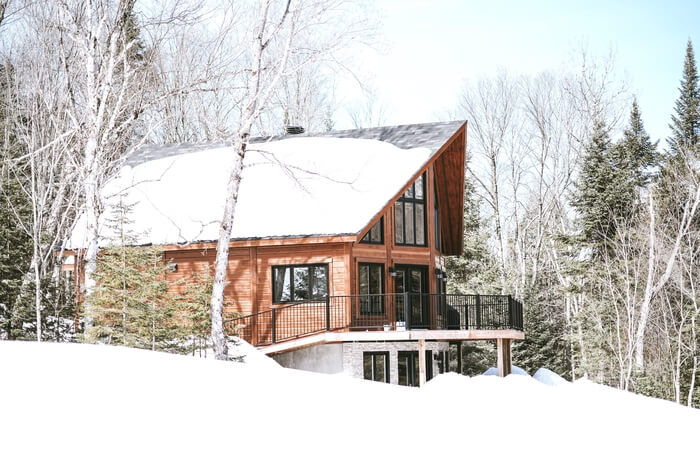
3. Breathtaking views make marketing a breeze
A cabin will basically sell itself, especially to nature lovers. Whether it is a lake, the seaside, or a mountain range, there are various locations that will offer breathtaking views.
Snapping high-quality photos of your vacation home and its surroundings will automatically make your listings stand out and entice travelers to make a booking.
4. Potentially charge luxury rates
Hosts can add luxury touches at a lower cost than traditional properties and could potentially charge luxury rates for a higher profit. For example, adding a large deck will not only help to create more space, but it will also give guests the chance to enjoy the views even better.
Other additions you can make include installing outdoor hot tubs or building a fire pit area with outdoor seating.
5. You have your own vacation home for friends and family
When you are not renting out your cabin, you will also be able to enjoy it. Depending on the size, you can also invite over friends and family (that’s if you don’t mind sacrificing some of the peace and quiet that make cabin properties so attractive).
Cons
1. Difficult to manage from far away
Cabins are usually far away from where hosts live, which means in order to own cabin properties, you need to have a solid business support network in place. This remote aspect can make it more challenging to manage, especially in the event of an emergency, for example, with the septic system.
Manage any vacation rental property remotely with vacation rental management software
Luckily, vacation rental software solutions, like iGMS, can help hosts to manage their cabin remotely. The following are just a few examples of the routine tasks that it can streamline:
- Managing multiple accounts and listings on the major vacation rental sites
- Organizing your messages and email into a single feed and using automated templates and triggered messaging to improve guest communication
- Automating the process of guest reviews
- Creating a website for direct bookings
- Tracking your business performance on an analytics Dashboard
- Managing direct bookings using a direct booking management toolkit
- Receiving payouts and creating invoices by connecting your Stripe account to iGMS
- Sharing cleaning daily schedules with your team and auto-assigning tasks.
2. Could require more maintenance
Compared to other types of vacation rentals, a cabin has more responsibilities when it comes to maintenance. For example, you will have to consider the possibility of more extreme weather and how to protect it against pests and other bigger uninvited guests. Then, you will also need to keep in mind the more regular maintenance tasks like repairing a broken window or roof leak.
3. Insurance could be costly
Insurance costs could be higher if the cabin is in a remote location or an unprotected area like a lake cabin. Also, as mentioned, more maintenance is typically required, which will up your insurance costs too.
4. At the mercy of nature
As cabins are located in remote areas, hosts will need to make arrangements for extremely cold and hot weather, insects, and other animals like a big bear that are naturally found in the woods. Also, you’ll need to do research to avoid buying a cabin in an area that’s prone to flooding, or perhaps in a hurricane zone, as your cabin will most likely not be built to endure these conditions. Not only can these elements frighten your guests, but the higher maintenance costs can also be quite a scare.
Is Renting a Cabin Profitable?
Considering that increasingly more travelers are opting for wide-open spaces where they can escape the hustle and bustle of urban locations, you definitely have a large pool of potential guests. So, if it is done right, renting a cabin can be profitable.
One of the most important ways to ensure that you remain profitable is to ensure that the costs of running the rental do not outweigh the rental income. Here are some of the most significant property costs of running a cabin rental:
- Taxes
- Utilities
- Insurance
- Furnishings
- Maintenance and repairs
- Cabin upgrades and other property costs.
How Much Money Can I Make With a Cabin Vacation Rental?
Not only can you generate a steady stream of rental income, but cabins in popular destinations also typically appreciate in value over time. For example, a three-bedroom cabin property in a popular mountain location can cost you about $320,000 and you can charge about $1,300 on average per night for such a property.
How to Start a Profitable Cabin Vacation Rental Business
If you are already familiar with how the vacation rental industry operates, starting a cabin vacation rental business is not much different. Just like traditional vacation homes, there are a number of key steps that you will need to take.
1. Research and decide on your location
Similar to buying a traditional vacation rental home, when it comes to buying a cabin the location will also play a key factor. When searching for the right location, you need to consider the weather, proximity to amenities, popularity, views, price of the properties, seclusion, and safety.
If you are planning to buy in the United States specifically, here are a few of the best real estate markets for a cabin:
- Lake Tahoe, California
- North Conway, New Hampshire
- Great Smoky Mountains, Tennessee
- Whitefish, Montana
- Denali National Park Region, Alaska
- Golden Gate Canyon Park, Colorado
- Blue Ridge Mountains, North Carolina
- Mount Rainier, Washington
- Jackson Hole, Wyoming
- Ithaca, New York
- Harbor Springs, Michigan
- Buffalo National River, Arkansas
- Stowe, Vermont.
2. Research and decide on the type of cabin you want
As mentioned, there are various types of cabins available and equally charming locations. Not only should your own preference guide you, but also your financial situation and target audience.
You will also need to consider amenities, accessibility, power supply, the city water system, and water quality.
You’ll also need to decide how much effort you’re willing to put into the property. Perhaps you want to build something new? Or, if the new investment alone is daunting enough, something move-in ready might be better. Using a home building cost estimator tool is a good way to get a sense of how far your budget might stretch if you do want to start from scratch.
3. Set out your business goals and a business plan
While one of the appeals of buying a cabin is the rustic lifestyle, you still need to write a business plan. This exercise also gives you the chance to get clarity on your business goals and other important matters relating to financing, your target audience, competitors, and how you will operate it.
The following are key aspects that your vacation rental business plan will explore:
- Business goals
- Executive summary of your business
- Value propositions
- Business model
- Operations plan
- Financial plan
- Target market
- Competitor analysis
- Marketing strategy.
4. Purchase and furnish your cabin
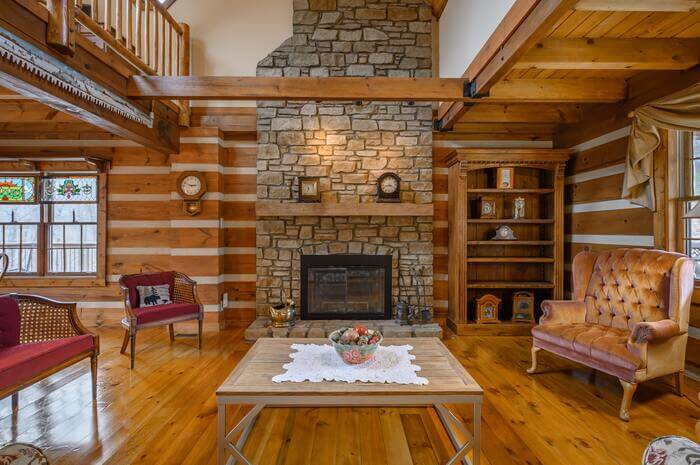
To ensure that your newly purchased cabin does justice to its unique location, you will need to make sure that your cabin offers all the essentials that guests will expect. These include items like:
- Comfortable beds (you can also opt for bunk beds to ensure there’s enough room for storage)
- Warm blankets
- Towels
- A bedside table and lamp
- A table or desk
- Hot stove
- Cutlery and crockery
- A kettle
- A refrigerator
- A microwave
- Hot shower
- A toilet
- Chairs
- Adequate lighting
- Mirror.
If there’s room in the budget and a good energy supply, a space heater and air conditioning will add to the guest experience.
Also, it’s best to use an inventory checklist to ensure nothing is forgotten.
5. Ensure you have the required licenses and are registered for taxes
Before you can list your cabin and start welcoming guests, you need to double-check that you have the required licenses in place. For more information about the licenses needed, you can visit your local government website where you can read up about the local rules, regulations, and license requirements. Here, you will also find important details about tax.
6. Get insurance cover for your business
Any vacation rental needs proper insurance. Though, considering that cabins are often located in areas that are known for extreme weather conditions or higher fire risk, it is even more important that you ensure that you have adequate insurance in place.
7. Create your listing on a leading OTA for your cabin
You most likely spent a lot of time furnishing your cabin. So, it is key that you do not rush it when it comes to writing your listing. You will need an attention-grabbing name for your property, high-quality photos, an accurate property description, and information about pricing and the cancellation policy. Considering that you put in all this effort to craft a detailed listing, it makes sense to list your cabin on a number of OTAs too. Depending on your type of cabin, you might also be able to list it on glamping accommodation platforms like Glamping Hub and Hipcamp.
That said, while it is recommended that you list on more than one OTA, it can lead to double bookings. To minimize this risk, you can use a channel manager feature such as the one iGMS provides.
8. Start marketing your business and welcome your first guests
While OTAs like Airbnb and Booking.com attract loads of website traffic, cabin owners still need to market their investment properties. There are a number of ways that you can market cabin rentals such as social media and creating your own website for direct bookings.
Then, to make sure that your cabin lives up to the marketing campaigns, make sure that you deliver on the guest experience. From ensuring that the cabin is spotless to providing detailed check-in and check-out instructions or even possibly a welcome letter or gift, there are many ways to ensure guests give you glowing reviews.
Top Tips For Making Your Vacation Rental Stand Out
- Invest in unique amenities
Investing in unique amenities can make all the difference. When it comes to cabin investment properties, there are a number of unique amenities that you can add to make the stay even more memorable such as:
- Hot tubs
- A telescope to look at the stars
- High-speed internet
- Air conditioning
- A personalized welcome basket with essential supplies
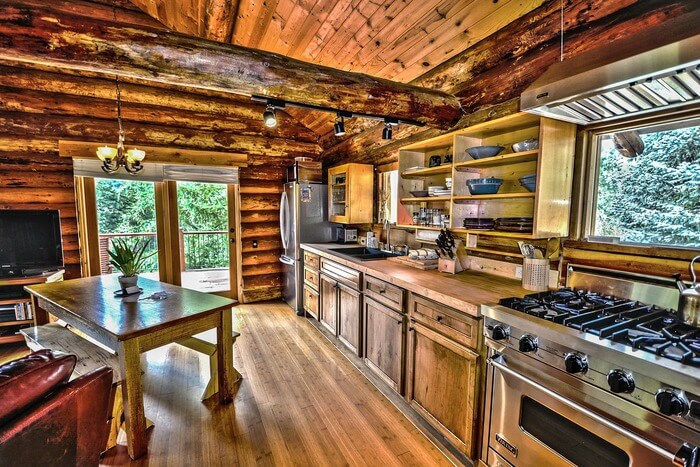
- Make your cabin accessible
Making your cabin wheelchair accessible will show disabled guests that you truly care about their experience and that your property can accommodate a wide variety of guests
This will also help you to appear in the search results on listing sites when people search for accessible vacation rentals. OTAs like Vrbo and Airbnb even have search filters for different accessibility features a vacation home might have. So, including those amenities means your rental will show up when those filters are used.
There are not many cabins that will offer certain accommodations for disabled guests, so being able to do so will help you stand out from the crowd.
- Customize the guest experience
As mentioned earlier, the guest experience is critical. Try to personalize the guest experience by, for example, providing guests with a guide on the area or highlighting any special events that might be happening during their stay.
You could also provide thoughtful touches like a s’more gift basket with marshmallows, chocolate, and cookies, for guests to enjoy around a campfire.
Final Thoughts
All in all, buying a cabin can make a good investment, but it will need proper research, time, and adequate insurance. Also, considering that it will most likely be located in a remote area, it is also highly recommended that you invest in a vacation rental software solution that will help you to communicate seamlessly with your local cleaning crew, and streamline your daily hosting tasks.
About the Author
Callan Riddles is the Content and Social Media Specialist at iGMS. Callan has a passion for finding new ways to help vacation rental businesses thrive. In her free time, she loves to travel, read, and experience all the new things that life has to offer.






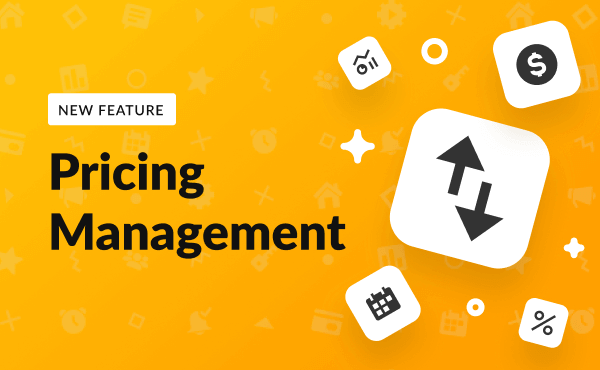
![Your Monthly iGMS Roundup [February 2020]](/content/images/size/w600/wordpress/2020/02/igms-roundup-feb-2020-cover.png)

